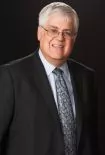The FCC has released a Notice of Proposed Rulemaking in which it proposes to repurpose 75 MHz of spectrum from 5.850 to 5.925 GHz (known as the 5.9 GHz band) currently allocated for automobile safety. In 1999, the FCC allocated the 5.9 GHz band to be used for Dedicated Short Range Communications (DSRC) in vehicles and by highway authorities to enable transportation and vehicle safety-related communications. In the intervening 20 years, automobile manufacturers have not widely incorporated DSRC technology into their fleets, and it is largely unused in the US. In addition, an alternative auto safety technology – Cellular Vehicle to Everything (C-V2X) – has emerged but cannot be widely used in the 5.9 GHz band because of the allocation for DSRC. Finally, the FCC has been working to make available additional spectrum for unlicensed operations like Wi-Fi. In furtherance of that goal, the FCC proposes to reallocate most of the 5.9 GHz band for unlicensed operations. In total, the FCC's NPRM proposes to reallocate 65 MHz of the spectrum to permit C-V2X and Wi-Fi operations in spectrum that currently is lying fallow. These changes would have a significant impact on a wide array of industries, including those that plan to incorporate intelligent systems in vehicles or any technologies that use unlicensed spectrum.
Specifically, the FCC proposes to continue utilizing the upper 30 MHz of the 5.9 GHz band (5.895 – 5.925 GHz) for transportation and automobile safety-related communications. The upper-most 20 MHz would be allocated for C-V2X operations. The FCC seeks comment on whether the remaining 10 MHz of the spectrum should be available for DSRC systems or whether it too should be allocated for C-V2X technologies. The FCC proposes that any spectrum allocated for C-V2X use comply with the existing DSRC coordination rules to protect federal users in the 5.9 GHz band. The FCC also proposes that DSRC operations (if retained) continue to comply with the existing technical and coordination rules. The FCC asks for comments on how to transition existing DSRC users should it choose to reallocate the spectrum.
The FCC proposes to reallocate the remaining 45 MHz of the 5.9 GHz band (5.850 – 5.895 GHz) for unlicensed operations. Because this allocation of spectrum is adjacent to an existing unlicensed band (5.725 – 5.850 GHz), the FCC believes that allocating the 5.9 GHz spectrum for unlicensed use will support high-throughput applications. Indeed, the FCC proposes to make the 45 MHz of reallocated spectrum subject to all the Part 15 operational principles for unlicensed spectrum and proposes technical and operational rules similar to those in the existing adjacent unlicensed band.
Comments and reply comments on the NPRM are due 30 days and 60 days after Federal Register publication. Cooley lawyers can provide additional information about the FCC's proposals and assist interested parties with participation in the proceeding.
The content of this article is intended to provide a general guide to the subject matter. Specialist advice should be sought about your specific circumstances.




